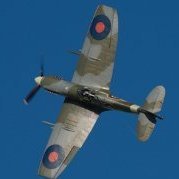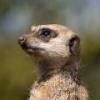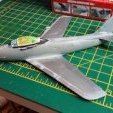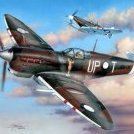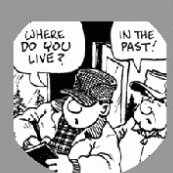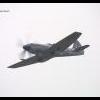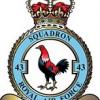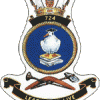Leaderboard
Popular Content
Showing content with the highest reputation on 05/03/18 in all areas
-
Hi folks! This is mas last completion, the really good Airfix Hurricane Mk.I in 1/72. Straight from the box. The only modification is that I vacuformed the sliding canopy. I hope you like it, althought I made several mistakes and it´s not my best kit. Best regards from Uruguay! Ignacio26 points
-
24 points
-
This is the most recent Airfix Hawker Typhoon release in 1/72 scale. I think this is the first time since returning to the hobby about 5 years ago that I was able to achieve a worn paint look to my liking. The model was a joy to put together with terrific detail and very little seam filling required. The only seam work that was necessary were the wing roots. I elected not to fill these in because I was in a time crunch because I was trying a new paint technique for my dad, who was coming to my house to work on his monogram 1/48 typhoon the following weekend. The paint was Mr. Color, which I tried for the first time and fell in love with. I "black based" the aircraft (an technique I learned at doogsmodels) by primering the aircraft with Mr. Finishing surfacer black 1500, then marbling on Mr. color 309 (the equivalent to RAF dark green) with areas of 303 (FS3402) and 319 (light green) for the green part of the camouflage and marbling on 331 (Dark sea gray) lightened with a little 306 (FS36270) with areas of darker and lighter 331 (by adding white and black) for the gray parts of the camo. The bottom was marbled with 335 (Medium sea gray). I then went over most of the panel lines with 339 engine gray. I also marbled light gray on areas I expected to be sun weathered. When it came time to mist on the final colors, I used salt weathering: I wet the surface down with water and sprinkled on crushed up sea salt, dried it with a hair dryer on cool and misted the color on. I would then wash the salt off and repeat the process two more times. I masked the camouflage with bluetak and tamiya tape. I gloss coated the model with Alclad 2 Aqua Gloss 2 clear by hand brushing it on, then applied the decals using Mr. Mark Softener as a solvent. I did a pin-wash in selected panel lines. The engraved lines are deep enough that they really didn't need a pin wash, so I just did the ailerons, elevators and the lines running through the decals. I airbrushed decanted Dullcote on the model and used tamiya weathering pastels for exhaust and gun smoke stains. Final weathering consisted of painting paint chips on the wings and fuselage using testors chrome paint and the smallest paint brush I have. I collected a couple dozen photos of ground crew servicing the typhoon to use as reference for where to put the paint chips and how worn the aircraft got. I drybrushed the outer leading edges of the propeller blades with testors chrome paint and dotted on a few paint chips sparingly. This kit was very impressive for the cost and was a lot of fun to put together. My dad was impressed that it had more detail than his Monogram 1/48 typhoon! I highly recommend it.23 points
-
I had previously posted this model several years ago, but as I was using Photobucket to upload my images, they were unable to be seen, so as there is a forthcoming Welshmodels 1/72 kit on its way I thought I would share some of the photos on here again20 points
-
Hi mates, I've wanted a nice model of the TSR.2 in my collection for quite some time. I picked up one of the 1:72 scale Airfix kits (the one with the Stratos 4 Japanese sci-fi theme) and started collecting some aftermarket pieces. The kit, as moulded, is quite nice - but there were some areas that I felt could use some additional detail. Most of the aftermarket was from CMK, but I also used some photoetch from Eduard and a turned brass pitot from Master. As I found out, several of the CMK resin pieces could have used some aftermarket of their own, as I encountered some size and shape issues. I suspect this was due to shrinkage of the resin. Let me apologize in advance for the lousy photos. I had a devil of a time trying to get good shots of this model, and I think it was due to the overall white scheme. I tried direct and diffuse lighting, a couple of thousand different white balance/exposure compensation combinations...the list goes on. The photos here are the best ones I could get, but I'm not happy with them. Not only is overall white no fun to paint, it's no fun to photograph. No more overall white for me! I admit defeat. As usual, here is my executive summary: Project: Royal Air Force BAC TSR.2 Kits: Airfix TSR.2MS (kit number A08011) Scale: 1:72 (although the lady jockeys from the Japanese cartoon look smaller than this) Decals: From the kit, representing XR220, the ill-fated airframe that not only fell off its lorry, but was ready for its first flight on the day the programme was cancelled Resin: CMK sets 7131 Interior, 7132 Exterior, 7133 Control Surfaces, 7134 Undercarriage, and 7135 Armament (only used the bomb bay door actuators from this set); Odds & Ordnance revised fin with leading edge intake (thanks to a generous donation by a fellow Britmodeller) Photoetch: Some pieces from Eduard 73257 Vacuform: Canopy and windscreen that came with the CMK set - first time I cut out all the pieces without cocking it up! Metal: Master AM-72-102 Pitot Tube Paint: Testors 2143 RLM21 Semi-gloss White, 1180 Flat Steel; Gunze H335 Medium Sea Grey, H338 FS36495, H18, H11 Flat White, H12 Flat Black, H14 Orange, H21 Off-White, H77 Tyre Black, H89 Metallic Green, H91 Clear Yellow, H92 Clear Orange; Alclad ALC302 Grey Primer, 111 Magnesium, 112; Floquil F110015 Flat Finish Weathering: Not much, as the real aeroplane never flew and is setting in a museum. I applied a light grey wash (made from Gunze H338) to the panel lines, and toned that down with a mist of Testors 2143 RLM21 White Improvements/Corrections Accomplished with the help of the resin and photoetch sets: Lowered the main wing flaps Posed the taileron flaps Posed all four airbrakes open Posed the port avionics bay open Replaced intakes and posed auxiliary doors open Replaced the vertical fin to include leading edge intake Replaced all tyres and wheels for more detail Modified the kit's main gear struts to fix the splay angle issue Did a really bad job trying to replicate the main gear brake lines Replaced all gear/bomb bays and wheel wells for MUCH more detail Replaced kit windscreen and canopy with vacuform parts Gold coating on canopy windows made from a mix of Gunze Clear Yellow and Clear Orange Replaced cockpit and ejection seats with CMK sets Build thread: Linky So here are the lousy pictures: Some in-progress shots before the fin and canopies got in the way: I have to include this, as the metallic green tubes on the back of the seats can no longer be seen, and I thought they looked pretty cool. So here they are: Well, there she is. Unfortunately, I don't think she will fit in my display case unless I send some other models to long-term storage. Wait, I could get a bigger display case! Cheers, Bill16 points
-
I am (very slowly) building a collection of the aircraft of various Royal Navy Aces (based on the Osprey book). This model represents Vought Corsair MkII JT537/P136. 1836 NAS, HMS Victorious, Operation Iceberg May 1945. On 4th May 1945 SLt DJ Sheppard (RCN) used this aircraft to destroy a D4Y Judy. SLt DJ Sheppard was the first Royal Canadian Navy Ace of WWII. The kit is the Tamiya F4U-1D kit. Throw it in the air and it assembles itself, except it has the rather excellent MCD MkII conversion set with new cockpit sidewalls, seat with harness, CO vents and external tank. TTS uses Xtracrylix paints. Markings are made up from various Xtradecal sets. I chose this aeroplane for my collection rather than the usual T8*B in which Sheppard scored the majority of his victories as I already have a Corsair in the Blue/White roundel (Lt Col R Hay) and I wanted a Corsair with the BFP Roundel and Bars. Anyway enough of the chat... Here is P147 onboard USS Essex for comparison... And in the cabinet... Hope you like it and thanks for stopping by...14 points
-
Hello fellow BM's. Here she is, my latest attempt at the hobby we all cannot get enough of! May I present one North American P-51D Mustang, by Airfix and in 1/72 scale. Flown by Lt. Eugene W James. 328th Fighter Squadron. I enjoyed the plastic on this one, but I was plagued by the demons of painting NMF, whom kept me on my toes throughout the entire process. She's built out of the box with some scratch built cockpit detail around the radio equipment and wine bottle foil used for harnesses. For paint, I reached for the trusty Tamiya and my stash of AK Extreme Metals. I managed to drop her after completing most of the painting and decals which cracked the fuselage down the joins and required careful filling, sandfing, masking and repainting! Nightmare. I also managed to drop some green top Tamiya glue just aft of the radiator vent whilst securing the exhaust scoop... more repairs!! Anyway, painting process; Undercoated with Humbrol rattle can primer and buffed to as smooth a finished as I could get AK black base, then coated with AK polished aluminium Tamiya XF-16 for the wings in an attempt to replicate the painting of the real thing Tamiya XF-4 for the blue and XF-7 for the red Sealed using AK Gauzy Agent Weathered using a mixture of oils and chalk dust Hope you enjoy and critique welcome as per usual. Cheers, JB13 points
-
Another model from my favourite experiments category, this time Westland Lysander with tandem wing (Delanne concept). Some historical backgroud you can find here I built it in 2009 as submission to Matchbox madness group build on ARC (WIP thread is here). It consisted of normal Lysander kit by Matchbox and vacformed conversion set by Airmodel. My other builds: Northrop X-4 Bantam A-37 Dragonfly D558 Skystreak XF5U Flying Flapjack13 points
-
Hello everyone , this model was built from the short run MPM kit that goes together without much trouble and has nice details . The airplane itself , while attractive , had the unfortunate reputation of being one of the worst from that era. It is said the Italians found them more useful as airfield decoy than in the air . Regards , Basu Roy12 points
-
Hmm...camera angle I guess, or some other localised disturbance in the space-time continuum. It's also possible that, while I wasn't looking, wifey put the model into her Chunk-a-gator Foreshortener machine. Here, let me have a tug on it and see if I can stretch it back... Better? While I was building this, I compared the parts to the 1:72 scale drawings in McLelland's book and as far as I can tell they matched quite well. Oh! I remember what I forgot - the fuel vents on the outboard trailing edge of each wing. They should have been drilled out, but they're awfully small. I was going to simulate the opening with either paint or a decal. I knew there was something! Thanks so much for all of your wonderful compliments! Personally, I don't think this is one of my better efforts, but it makes the time and effort worth it to hear what you think. I'll probably wait until tonight to take the rest of the photos, as it seems the pix come out better if the only light in the room is coming from my photo lamps. Especially when you're trying to get a good white. Cheers, Bill12 points
-
OK to bring this evening of welcome thaw to a gentle close Wait no longer Steely rings added and jetpipes inserted where they will do the most...er? Good? Here endeth plan A Now (tomorrow) I can get mixing with the Milliput and inserting some intakes Nightol11 points
-
Hi Folks, May I present you my Fujimi FG.1 007 This is not the Airfix kit, rather the old Fujimi one, I really like the kit tho there were some fiddly parts and some parts need a lot of sanding and filling but overall a good kit. The kit decals were ruined however was saved by a good friend Mark Davey (Thank you) he sent a one. For paint, I used a mix of Mr.color and Tamiya Japanese grey. Hope it has turned out satisfactory. Thank you. with the American Cosuin.10 points
-
Hi all, built this one out of the box, except for the Eduard cockpit instruments. i came across an article on using aluminum foil instead of painting and i was quite intrigued by it , so i decided to give it a go at it. hope you like it.10 points
-
Hi folks, I've had a bit of a gap in the middle owing to family holiday, work, etc. but I've finally finished the skeletons I started at the very end of January. They're Games Workshop 28mm models, and they're a bit long in the tooth now. There's nothing really wrong with them but they don't have quite the poses and detail of the newer stuff. The biggest issue is that as they're designed to rank up on square bases they have rather restricted poses, so they're not a very diverse unit. I've tried to build in a bit of variety with the various optional parts, and have some spears aloft and some down low doing the stabbing. The command group (champion, standard bearer and musician) are quite characterful, especially the musician's ludicrous horn. I was a bit worried about attaching the shields at the end, but they had decent gluing surfaces so I was able to scrape some paint away and fix them in place with solvent glue. I think my favourite is the skeleton with the coffin-lid shield and half of his skull missing. They're all painted roughly the same way - Alclad primer, Tamiya acrylics for the basic bone colour, Citadel paints for almost everything, Alclad varnish and Citadel metallics with some Vallejo Liquid Metal colours for the brightest highlights. The metals are quite shiny but the diffuse lighting kills that a bit, I'll have to take some pictures on black and see how that looks. NB: The bases are inspired by Padley Gorge near Sheffield where we used to live. It's not exactly a tribute but I remember the mossy rocks and autumn leaves fondly. Hopefully I can develop that a bit if I do some matching scenery. Thanks for looking, and to those who commented on the WIP thread, it's always helpful to get another pair of eyes on these things: Cheers, Will9 points
-
I picked this up as an impulse buy a few years ago as I really fancied the silver SEAC aircraft. Several times during the build I wished I hadn't. Horrible fit, trenchlike engraving on the newer parts. I actually set it aside for over 2 years before doing a "quick finish over the last couple of week so by no means my best work at all, very much a view from a distance model. Build thread can be found here. For all that though, it still looks pretty attractive. The markings are for an aircraft of 648 Squadron in India, 1945. Thanks for looking.9 points
-
Hi Everyone, At last I`ve finished my attempt at Eduards 1/48 MiG-21 and managed to get some pic`s whilst the weather cleared briefly. Built from the PFM Profipack boxing and finished to represent an aircraft of: 927th `Lam Son`, NVAF, piloted by Le Thanh Dao, 10th May 1972 Really well detailed kit that seemed to fight me right up until the end, too many almost microscopic parts for my liking which often pinged away into some other reality or were impossible to hold and file down..... ...and ended up being replaced with bits of wire and scraps of plastic. The Photo Etch, which I normally dread worked really well by comparison. The last thing that happened was the gunsight disappeared at some point after being glued to the windscreen frame right at the end of the build, so I had to cobble one together from bits and pieces....... ........then fit it after the screen and seat had been fitted. The scheme isn`t one of the kit options and is one that caught my eye in Ospreys MiG-21 Units of the Vietnam war book, Bort No`s came from the stash. Hope you enjoy, thanks for looking Cheers Russ9 points
-
First Roden kit I have ever built must say not impressed with the mouldings, the tyres needed a lot of work. It's an unusual subject though and always interested me. I think after reading Wilbur Smith's, Cry Wolf, I got interested in them. Can anyone suggest a technique regarding headlamp glass? The kit does not come with clear headlamps, I tried with a spare lamp using super glue, but wasn't pleased with the result.9 points
-
I really enjoyed this build, I have another and intend to improve the front grab handles may use staples and shape them. Also intend to leave hatch open and add a commander can anyone suggest a good quality detailed figure manufacturer that would suit??9 points
-
The latest refugee is Special Hobby's Boulton Paul Balliol basic trainer, a subject that I was very pleased to hear was being released. I wasted no time in getting one when it came out and, true to form, it spent the next couple of years sitting in the stash until I got round to it. Oh, the fickleness of the modelmaker. Balliol T.2 1 by Martin Schofield, on Flickr The kit lies in between the older SH short-run models and the likes of their Gnat and Mirage F.1, still a little chunky but with much more refined detail. There were no locating pins, but slots and tabs for the wings and tailplane were included. The radiator housing had no locating marks either and required a lot of repositioning until I was happy. All of the navigation lights were included as clear parts, and fit perfectly with a little sanding. Balliol T.2 2 by Martin Schofield, on Flickr The fit was good, with not much filler required. Resin and PE parts were nicely detailed, though with the heavy cockpit framing of the Balliol and the fact that the interior is painted black not a huge amount can be seen in the cockpit. Oddly, the seat harnesses were grossly overscale, so are now in the 1/48th spares box and I used some generic RAF harnesses instead. PE undercarriage doors offer the correct thickness, and are an excellent idea. Balliol T.2 3 by Martin Schofield, on Flickr It was painted with Vallejo Model Air and Tamiya acrylics and varnished with Alclad Klear Kote. The canopy framing took forever to mask up, unsurprisingly, but it was thoughtful of SH to include the anti-dazzle panel on the decal sheet. The decals themselves were crisp and thin, and went down very well. The very thin dark blue stripes bordering the fuselage band required no trimming and fit perfectly. And yes, the band itself is not the correct shade of Cranwell blue, I know -as one of the Truro Model Build Night attendees, who underwent flying training at Cranwell, has not let me forget. Balliol T.2 4 by Martin Schofield, on Flickr9 points
-
Thanks Bill Out of whack indeed... another weird phrase that the internet doesn't really help with, especially regarding the film. I said I wouldn't look at Steve's thread during my kit bash but, when you're up against the wall bulkhead, consulting the Oracle is often the best way. I thought I'd tracked it down here on page 12, just above the picture of the handsome young aviator (and further down the page, his even better looking passenger) but no, that's just where he improves the vents. The modified part gets fitted on page 54 here and there's some of the usual perfect @Fritag modelling and reference material there. Beautiful work, just beautiful. I am not worthy. Managing my expectations and lowering my standards, I continued the kit bash ( sorry Steve ) A bit of sihrsc action to open up the hole in the fuselage back to the panel line: Steve warns that fiddling with this area may effect the canopy fit so that was plonked on for a quick reference: So, the offending part needs to come over the bulkhead to meet the canopy (even though Steve says it should be behind). Bash bash... The shape of the part at the front matches the back of the canopy perfectly: ... so I can't do anything there. Is it possible I fitted the bulkhead back to front and the slope on that is the wrong way around? Maybe. Hard to tell. If that was the case, I need to trim off the slope so it's parallel to the fuselage edge: ... but then when I reached the top of the seat, decided to chisel something off the inside of the top part: Happy with the fit now: Onwards!9 points
-
The pants are opened at the bottom to slide the wheels in: The Aeroclub Wasp Junior is a perfect fit to the cowl:9 points
-
The tail surfaces have to be thinly sanded, without excesses. The two parts on the left still need some thinning down: Correct sanding is the clue to any vacuum-formed model: Pants are separated: Using a contour gauge the bulkheads are made from the scrap plastic. Some of the halves are glued together. Demarcation of windows and doors begins: } Separation lines for all control surfaces will have now to be engraved. The tail has a complex assembly, and that will have to be taken care of too.9 points
-
The sun shining down on these green fields of France The warm wind blows gently and the red poppies dance The trenches have vanished long under the plow No gas, no barbed wire, no guns firing now But here in this graveyard that's still no man's land The countless white crosses in mute witness stand To man's blind indifference to his fellow man And a whole generation werebutchered and damned The song of Dropick Murphy, "The green fieleds of France" was my Inspiration for the first work on theme WWI. The models which I'm used for this diorama was; Mk.IV Male from Emhar. French Infantry from Airfix. German Infantry from Revell. For making the base I used natural materials (sand, earth, stone etc.) made by „Nature in scale“. It's a little grass that's seen is from „Noch“ Trenches are made from natural wooden slats. Other equipment, is made of resin and of the ther models remains. Colors, filters and washes which I used are from MIG ammo. All comments are welcome, and thanks for watching.8 points
-
Hi everybody; very little time for modelling last WE (almost none, in fact ) The little I had was devoted again to the refueling receptacle; I wasn't happy with the way the initial scribing turned out, so i filled in the seams with CA+talc mix, sanded back to a flat surface and rescribed using Dymo tape as guide The same went for the inner lines, so that now I have the outer frame of the receptacle all scribed You can see some fresh Tamiya Green Cap in the last pic, which I (as usual) made flow in the scribed lines to clean them up properly. That's really it, I'm hoping to get more done during the week Ciao8 points
-
Here is a 1/72 Eduard Indomitable Hellcat completed as part of my ongoing project of building late-war Pacific subjects, and the Hellcat portion starts about here. The kit lived up to its fine reputation and I'm looking forward to building the many (many) Eduard Hellcats in the stash. I'd been hemming and hawing about getting one of those computer controlled vinyl cutters, and inspired by @CedB's decisiveness in doing the same, I acquired a Silhouette Portrait. So this is the first use of the Portrait to make my own paint masks. It worked! (with a few hiccups - more on the painting than the mask making end) Together with a BPF Corsair from the same project.7 points
-
Never come across this make of model before, but went together very well with no flash or fit issues. I have gone for a weathered battle worn look. The weathering I used crushed artists pastels mixed with a drop of washing up liquid. The tank has not been attached, I know gives me the option of putting the bomb underneath at a later date.7 points
-
First go with Flikr hope this works.. All comments welcome positive or negative.7 points
-
Hi, guys! First, my F-35B retro painted as an A6M2 of the Kaga Air Group took Bronze at the IPMS contest at Madison, Wisconsin, this weekend against some very stiff competition! But that's not the mystery. A vendor at the contest showed me something very special from WWII Japan. I'm not sure this is the correct forum, but with all you smart guys from around the world might help me figure this out, and what it is that I possess. What I know...These kits were brought home by a GI from occupied Japan after WWII. They were put in a closet for 70 years and rediscovered. They were listed as propaganda material of an armored car and a battleship, issued by the Ministry of Education for national schools, 4th grade, handcraft study. If anybody has anything else to add about the history of these kits, please chime in. If they are uber rare, I may donate to a museum. The wood appears to be made of Hinoki, or Magnolia wood. The armored car appears to be dated 1937. Thanks. Armored Car Model Ship Model7 points
-
Moving along...yes, things do look better with paint, I must say, especially if it is a snazzy camo/trainer-yellow combo! I started with some basic masking and airbrushed the first, darker brown coat on the upper fuselage and the top wing (Vallejo Model Air Camo. Light Brown). After drying, I masked the brown bits with sticky tack (after masking other parts with tape) and airbrushed on the top layer of green (VMA Olive Green). The instructions guided me to paint the topside of the lower wings different shades of brown/green so I then airbrushed the lower wing (VMA Sand Yellow) and let this dry. Numerous masking and unmasking processes were par of the course here. When dry I sticky-tacked he lower wing and airbrushed the lighter green (VMA A-24 Cam. Green--sorry, no photos). When dry I unmasked the whole thing. Now I'll let it sit for a solid 24 hours and set. The result is a four-tone camo with the yellow. Like I said, snazzy. Any odd bits that need refining will be taken care of with touching-up and weathering.7 points
-
Thanks Bill - filler on its way (see below) and 'Dead Men Don't Wear Plaid' added to my watchlist Thanks Roger - primer will be on soon. I'm still thinking (OOB) whether I should use white primer (OOB!) and mask the white stripes (for goodness sake OOB!), especially considering the warning Bill gave about the transfers. Thanks Andy There two are not really 'my theme' so they're not getting as much love as they may deserve... You 'have a certain number'? Is it nine by any chance? I thought I'd share some clean up tips but then I had the dressing changed on my neck so I need a lie down (poor little Bunny). Things have been filled though and both are ready for sanding: Not much required, to be honest. I think I'll sand and polish then stick on the pointy bits before the primer. Later7 points
-
Tamiya P-51B Mustang. The kit was actually the Mustang Mk III boxing but I'm doing a collection of 8th AF models, so decided to make it as a USAAF P-51B. The aircraft is modelled as a P-51B from the 336th FS, 4th FG, the famous Debden Eagles. The pilot was Capt Don Gentile, who was the first 8th AF pilot to match Eddie Rickenbacker's score from WW1. Gentile previously flew Spitfires in the RAF but transferred to the USAAF whent he 8th AF was established in England. His Mustang was named 'Shangri La' and was written off when Gentile crashed it, while performing stunts over Debden airfield on Apr 13th 1944. He was then grounded and sent him to sell war bonds. The decals used on the kit come from Microscale, Eduard Zoom etch was used to detail the cockpit and the 75gal Drop tanks are Eduard Brassin as the kit didn't contain them. It was painted with Vallejo Model air paints. thanks Mike6 points
-
...Sometimes the world tries to knock it out of you...but I believe in Spitfire the way that some people believe in fairy tales... Sorry August Rush...I just had to correct you...Spitfire is one and only... This is Airfix 1/24 Spitfire Mk Vb...holy grail of my childhood and reason of huge row with parents ("You don't need it!"). I made this model about 10 years ago and I just had to do it again. This time with use of airbrush, Tamiya paints instead of Humbrols etc. I've used Master Hispano barrels and Eduard seat belts. And MIG oilbrushers, Tamiya paneliners and pigments and a lot of Evergreen styrene. Antenna is courtesy of my wife - she donated her own hair BTW , it's a what if. This is model of aircraft representing Zumbach's fighter , not a real one.So chipping is completely fictional I know that doors were lower when opened but I had a problem with hinge so I decided to leave it as it is. DSCN3965 by Arti Kapi, on Flickr DSCN3968 by Arti Kapi, on Flickr DSCN3969 by Arti Kapi, on Flickr DSCN3971 by Arti Kapi, on Flickr DSCN3972 by Arti Kapi, on Flickr DSCN3974 by Arti Kapi, on Flickr DSCN3975 by Arti Kapi, on Flickr DSCN3976 by Arti Kapi, on Flickr DSCN3978 by Arti Kapi, on Flickr Hope you'll like it6 points
-
Hi Everyone, helicopters are not really my thing but this one came as a 2 for £20 from Asda just before Christmas (in fact I got 3 for £30 but thats a long story). Having said that I really enjoyed the build and it went together quite easily. The only real problem I had was with all the glazing, not my favourite part of any build and its one of the areas where I need to try other methods, consequently I don't think this is one of my best. Painted with Tamiya acrylics, yellow with just a touch of red. Apologies to the purist out there I know some of the details aren't correct, I'm blaming the box artwork. I must learn to research before I build! As usual all criticisms and comments are welcome. Thanks for looking.6 points
-
A bit of a disaster this one. The AFV kit goes together very well with excellent detail and fit. The instructions are clear on which bits needed to be painted red and which bits were white. When it came to decal placement I could not get them to settle over the curves, no amount Microsol was helping and the decals ended up disintegrating. So it sat on the shelf of doom for a few weeks while I sourced decals courtesy of an OH models sheet. With hindsight I should have masked and painted the underside cross as it was less than successful. I think my radome colour is too dark as well. Anyway here it is (without photos of the underside) 20180304_111720_edit by dereknferguson, on Flickr 20180304_111716_edit by dereknferguson, on Flickr 20180304_111707_edit by dereknferguson, on Flickr 20180304_111659_edit by dereknferguson, on Flickr6 points
-
The Kinetic Harrier T2/4/8 is a lovely model, and builds to a very nice representation of the ugliest of the Harrier family. However, it is not perfect, and benefits from some tweaks. This was the second one I built, after I suffered a bad reaction between the oil paint thinners I used for weathering and the Alclad varnish on the first. As I had had several problems with the paint, I decided to start again. The second time I spent more time checking fit, and got a much better build much faster. Some of the following have been covered in other (better) builds, but I decided to list all the changes I made. Some were to improve fit, others to improve accuracy. I'll come the only real error of accuracy at the end. I normally don’t care too much, but I spent several years working on Harriers and wanted a good model of one I was lucky enough to fly in - even if I was very air-sick. Most of these fall into the "you must be mad" category. The main wheel bays roof should have 2 indentations to fit the Harrier's enlarged wheels over the earlier P1127. I just scraped some indentations out of the thick plastic. The main wheel bays benefitted from a lot of check fitting and adjusting, both as an assembly and then when fitting to the fuselage. The easier solution would be to position the wheel doors almost closed - they drooped an inch or so on the ground but could be unlatched to open fully for maintenance. The rear cockpit did not fit well, with a gap between the interseat area and the port fuselage side. First time round I thought it was my mistake, but the second time I reduced the width of the port rear shelf to fit the fuselage side better. Result, no gap. I added a plate with 3 holes to the port sidewall of the rear cockpit to simulate the fibreglass liner. The throttle and nozzle control levers are far too small. I added larger ones using wire and plastic rod. The wing tip reaction nozzles on top are too wide (spanwise) and shallow. I reduced the width by 1mm using plastic strip, and then cut out the middle to make it deeper and simulate the rotary valve. The LRMTS nose should have bulges for the laser door pivot points. I added a small disk of plastic card to each side. There has been a lot of discussion on the inner wing pylons, which need the nose profile straightening. However, the pylons are also too long. I cut each pylon in half horizontally, then moved the lower portion forward 2mm, cut the nose at 45 degrees and cut 2mm of the rear. This also ended up with the right profile still on the wing underside. The tailplane pivot is 4mm too far forward. Kinetic have assumed that the fuselage bump is due to the pivot , but it is really there to allow the tail plane actuator and front spar to fit at max incidence. I moved the pivot back on the fuselage and tailplanes, opened up the area in front of the pivot and added some basic structure and actuator. This allowed me to show the tailplane at typical resting incidence. The tail plane tips needed a quick reshape from a sanding stick. I opened out the APU inlet and exhaust, and added the ducts and inlet mesh. The exhaust had a separate inner liner added as well. I filled the wing leading edge sawtooth depressions on the underside. I added additional bulges to the gun pods, drilled out gas ports, then added small plugs to the fronts to simulate the wooden cones that were fitted when the pods were not fitted with gun - to save weight. I added 5 thou plasticard shims to the horizontal part of the joint where the wing attaches to the aft fuselage. This raised the rear of the wing, and with a clamp pushing the wing down I got a joint that needed no filler. The only problem I could not fix entirely to my satisfaction was the intake. The engine fan is too small, and this throws out the intake shape in subtle ways. From what I can find on line, the Pegasus 103 fan was 115 cm diameter, so should be 24mm. The Kinetic fan is 21mm across, so 3mm too small. The picture shows the Monogram fan for comparison (on the left). The result is that the intake slopes in too much - I modified the forward portion it to be closer to the original profile using plastic card inserts to replace the intake trunking. The result is that the intake slopes in too much - I modified the forward portion it to be closer to the original profile using plastic card inserts to replace the intake trunking. This makes the blow-in door intakes shallower, which is more accurate - they should be visible from the front. The rear of the intake and fan can't be fixed easily, but the undersize fan is not too noticeable and I did not feel like building a new one. At the end I added Flightpath's CBLS - very nice if fiddly. Decals came from several Xtradecal sheets as well as Kinetic's, and the codes and serials were home-printed. Finally, here are a couple of pictures with an earlier member of the family - Monogram's Harrier GR1 backdated to a Kestrel. Roll on the Kinetic GR3…6 points
-
Thanks Andy - have a look at Steve's thread, linked to above but here again. He's a proper modeller and is using the kit as a 'basis'. The fitting of the coaming (and ALL the other problems) are being addressed there, I'm just bashing the kit. Talking of which, more nice wheels up bits: ... which completes the attachment of non-sticky-out bits so both are now ready for filling and sanding: Ready for filling and sanding by Ced Bufton, on Flickr Just need some mojo then.6 points
-
Hasegawa´s Fw 190A-5/U7 kit 09976 built as Hermann Graf´s regular A-5 because I didn´t dare to use the resins included. I managed to remove a chunk of the wing early on the build, break the right side´s lightning bolt and part of the white trim on one of the tulips. While building the kit, I thought the only difference between Graf´s regular A-5 and his later U7 was only the cowling, painted entirely in yellow with the high altitude intakes, but it turned out that the A-5 didn´t have the outer cannons, and these were added to the kit. I was so fucused on the paint scheme that I didn´t realise the difference in armament. The model was brush painted with Revell Aqua 15/40/45/49/69/47 (RLM 04/70/02/65/74/75).6 points
-
Built this over the Christmas holidays present from my wife, also got a Universal Carrier Mk 2 that is presently under construction. Not very good with figure faces and still got a long way to go. I've tried to make the figure slightly different and put the binoculars around his neck. I tried adding a sling to the MP 40, but it didn't look right. This is a very old kit by Tamiya, but still satisfying to make. The PC brigade got to this kit, as the Africa Corps decals had been cut out of the decal sheet. So opted for the Grossdeutschland version 1943ish ...5 points
-
T-55A Early Mod 1965 Interior Kit (37016) 1:35 MiniArt via Creative Models Ltd. The T-54's gestation and transformation into the T-55 was long-winded and complicated by constant changes to an as yet unsatisfactory performing vehicle, which began at early as the end of WWII. Production of the T-54-1 was halted due to production and quality issues, and recommenced as the re-designed T-54-2, with the turret design changed to closer resemble the eventual domed shape of the T-55. The -2 didn't last all that long before the -3 replaced it, and the requirement for survival of tactical nuclear blasts led to the eventual introduction of the similar looking, but significantly different T-55 that we know so well. As the heavy tank fell out of favour, the T-55 became part of the burgeoning Main Battle Tank movement, with thousands of them being produced over the years in various guises. In the early 60s the T-55A was developed, providing more adequate NBC protection that required a lengthening of the hull and coincidentally added anti-spall protection for the crew. It also sounded the death-knell of the bow-mounted machine gun, which was removed to improve ammo storage, and hasn't been seen on MBTs for decades now. The Kit Part of the ever-expanding range of early Cold War armour from MiniArt, who seem to be kitting every conceivable variant from the earliest T-54 to the latest T-55, which will hopefully include some of the more unusual marks as well. The toolings are all essentially brand new, and have been designed in a modular format to ease the way toward new variants, which makes for a high sprue count. Some of the kits have been released in augmented Interior Kit boxings, with all the extra details to open up your model as much as you please. This is one of those boxings, and it arrives in their current orange themed box, with a painting of the tank in question on the front, and the stylised "Interior Kit" branding on each face of the box. Lifting the kit gives the feeling of how much is inside, and I may have emitted a minor expletive when I saw how packed with sprues the box was, and when I say packed, I mean it. There is almost no room for anything else in the box, and I'm dreading putting it all back in. There are 94 sprues in mid grey styrene, many of them quite small, and some of the larger ones linked together in pairs, a clear sprue, two sheets of Photo-Etch (PE) brass, three decal sheets (one larger, two small), and the instruction booklet. It seems that I was wrong about putting it back in too, as I have managed it although I wouldn't like to put anything else in there! Detail is everywhere, and is crisp, with judicious use of slide-moulding to improve details further, and make hollows where needed. The inclusion of PE helps further, allowing parts to be given a more scale-effect. Construction begins with the water-cooled diesel engine, which is built up from a substantial number of highly detailed parts for later insertion into the hull, which is next to be made up. The hull floor has cut-outs for the suspension mounts, hatches and access panels, all of which are supplied as separate parts. The suspension is torsion-link, so the bars are inserted with the axles at their ends, then the lowest parts of the interior are added on top, including the base for the turret basket and the driver's position. Ammo is festooned wherever the designers could fit a round, with a large store next to the driver's station in the position formerly occupied by the bow machine gunner. The hull sides are separate, and are well detailed parts, which have further detail layered on both sides before they are added to the lower along with engine bay firewall, the engine and its mount, plus sundry other details that make the T-55 quite cramped for its occupants. Externally, the T-55A could be fitted with a mine-roller, and although one isn't included with this boxing, the fitments and bracketry is included for the upper and lower glacis alongside the standard light clusters, lifting hooks and pioneer tools. The main lights have a choice of clean lenses, and fit inside a multi-part cage to protect them from damage, which will take some care to glue together neatly. With the glacis and the turret ring "bat wings" added to the hull sides, the wheels are handled next, with five pairs per side with separate hubs, plus the idler wheel at the front, and drive sprocket at the rear. Tracks are left until a little later and are of the individual link type, requiring 90 links per side, each of which have four sprue gates, but no ejection pin or sink marks to worry about. What is there however is stunning detail, which includes the casting numbers inlaid into the hollows of each track link, and close-fitting lugs that should make the building an easier task. The turret ring is fitted behind the glacis, and the fenders are build up alongside the engine access hatches, which are all then added to the hull, completing the engine deck first with some rather neat PE grilles and mesh backed louvers that have PE slats for realism. The fenders have additional fuel tankage fitted with hosing between them, and lots of PE fixtures, handles and such, with even more PE bracing inside the sprung mudguard parts, tools, toolboxes and the exhaust on the port side. The kit includes plastic towing eyes, but you are going to have to provide your own cables as none are include in the kit, but given the sheer volume of parts it's excusable. At the rear an unditching log is lashed to the bulkhead with PE straps, and the extra fuel drums so often seen are also lashed to curved brackets that overhang the rear of the hull. Between them the deep wading funnel is attached by a couple of pins to the bottom of the brackets, and it has its own group of PE brackets for the bracing wires that are seen when it is in use. The turret itself is a busy assembly, having a semi-automatic breech loading mechanism that is built up first, then the lower turret is fitted out with radio gear, shells, before the breech is installed on two mounts at the front, which have the breech guard and a rack of box mags for the coaxial machine gun attached on the right and underneath respectively, and the sighting gear on the left side. The upper turret has its anti-spall lining added in sections, and is then decked out with a number of small assemblies, after which the turret roof is fitted with hatch, vents and vision blocks. More anti-spall lining is attached to the inside of the roof, and yet more ammunition is stowed as ready rounds for immediate use on the wall. Externally the grab rails, forward mounted searchlight, commander's cupola and a blast-bag around the mantlet are all added, and the single piece barrel with hollow muzzle slips through the centre and keys into the breech. The blast-bag is finished off around the edges with PE strips, and a large camo net is attached to the back of the turret by more PE straps. An armature links the gun barrel and the searchlight together so they move in unison, and an ancillary searchlight is fitted to the commander's cupola, with a choice of the driver's poor weather hood built up in either the collapsed or deployed format, with the former stowed on the turret bustle, while the latter fits over the open driver's hatch. Markings Although on first glance it looks like there are three markings options, there are in fact nine, which is nice to see. Every single one is Russian Green, but there are some nice variations in operator and differences in the application of serials etc. From the box you can build one of the following: Romanian Army 90s – Romanian roundel and white 5049 on the turret sides. Soviet military parade colouring 60-70s – white accents on rims, fenders & Soviet medallion on the turret sides. Somali Army Ogaden War, 1977 – no markings other than small flags front and rear. Marine Infantry of the Soviet Navy 1970 – White 512 and Soviet naval flag on turret sides. Soviet Army 60-70s – White 423 on turret sides. Hungarian People's Army, Operation Danube, Prague, Czechoslovakia, Aug-Sept 1968 – White cross over turret and sides. 55th Marine Infantry Division, Pacific Fleet of the Soviet Navy, Ethiopia 1980 – White 116 and Soviet naval flag on turret sides. Yugoslav People's Army, 80s – White 18131 on turret sides. Hungarian Army 90s – Hungarian pennant and white 122 on turret sides. The decals are printed on bright blue paper, and have good register, sharpness and colour density, with a closely cropped thin, matt carrier film. Conclusion These Interior Kits are amongst the most comprehensive kits I have seen in a long while, with even the tiniest details catered for, down to the tiny nuts holding the snorkel to the rear of the tank. They're certainly not for everyone, as some folks don't want interiors for whatever reason, but as a T-55A with interior, it is a fabulous kit and will keep you modelling for hours and hours. Very highly recommended. Review sample courtesy of5 points
-
Further to my first AFV RFI (M41DK) which I posted earlier this week, this is my 1/35 SIG 33 from the kit by Alan models. I finished this one a year ago, and it was the first AFV kit I had completed after almost 30 years. It was a challenging model to build, certainly not up to the standard of Tamiya, AFV club et al, but I persevered as a way of practicing the many finishing techniques that have now become commonplace, but which due to the long gap away from modelling (life intervened), I needed to have a crack at! I replaced the kit barrel with some aluminium tube, but the rest was from the kit, much refined and cleaned up and lots and lots of fettling to fit. Tamiya acrylics were used to finish, Johnson's Klear followed by washes and weathering, with finally a dusting of almost matt varnish. I really enjoyed trying out weathering techniques and it has encouraged me to pick up where I left off in earnest! The last couple of pics are a bit under exposed but they show detail well. Comments/questions welcome This is semi complete before fitting sight and final weathering And finally one before painting5 points
-
Hi Guys, This is my completed M113 to go with the Centurion I recently finished. The level of detail in this kit is amazing and some of tiny parts really tests your fine motor skills Fit was great, however the removal of flash and joins from the finer parts was a challenge. I have based my model on a Aussie M113A1 circa 1967-8 with the Resin APC crew from Firestorm models. I have ordered the RAAC M113 conversion which will add some stores and ammo crates top side in preparation for the FSB Coral diaroma. Still very novice at weathering but I am happy with my fine grey splatter to simulate chips and scratches (thanks youtube). Anyway guys I hope you like and I certain welcome advice and suggestions. Cheers Fitzy5 points
-
They're looking great Ced, the Gnat is tiny. Yes, masking the stripes will be much easier than using decals. OK GUYS, I THINK HE BELIEVES US! Ooops, I said the loud part quiet and the quiet part loud. No, really it probably would be easier Ced, I'd just worry a little about painting the red over a white primer.5 points
-
A couple more... The Sabre has a fair few boilerplate rivets on it, it's not only the Shackleton that carries the curse. One of the nicest Frog boxtops has to be this version of their Hunter. Another rivet carrier as well! Here's the first issue... ... posted elsewhere on the forum before, I can't remember posting it in this thread though. Apologies if I've repeated a post, it looks nice whatever!5 points
-
Still working on this. I removed all the ridge and furrow from the wings and then built back the framing positions with rod and filler, plus taped joints over each rib, still thinking about further shading. I assume the prop is one piece of wood, too early for laminate so had a go at wood effect. Never done this before so quietly pleased with the outcome. Rigging...aah... The frames are very thin but need micro drilling frequently. And then fishing line threaded in and superglued. Lots more rigging to do, particularly as the two frames are added to the wings etc.5 points
-
Yep indeed, started and being off work with the recent snow, a bit more done! Not much to see in the cockpit, being OOB. The seat is drying and will be added later. Again, just the kit seat with some belts added. Esci_AV8A_Harrier_cockpit by Dermot Moriarty, on Flickr Then started to bodge the intake doors.. Esci_AV8A_Harrier_intake_2 by Dermot Moriarty, on Flickr Some tidying up still needed but a little better.. Esci_AV8A_Harrier_intake_3 by Dermot Moriarty, on Flickr Top wing parts glued together... Esci_AV8A_Harrier_wing by Dermot Moriarty, on Flickr And added to the fuselage halves. Also added the tail parts and drilled out the small intake at the base of the tail. Esci_AV8A_Harrier_Wip_1 by Dermot Moriarty, on Flickr Thanks for looking, more soon! Cheers, Dermot5 points
-
Not going to get drawn in to yet another off-topic Whirlwind discussion5 points
-
I can well believe that..... apparently some years later when the Tucano was introduced to RAF service, the shiney new airframes were being lined up for the first AOC's inspection of the type at Church Fenton. The SWO spent ages getting the lineys to move the third aircraft in the line forward a bit.... then the fifth aircraft back a bit, etc, just to get them lined up neatly. After many hours of this, someone got a measuring tape out & discovered there was a significant difference in length between the longest & shortest of the RAF's brand new trainers hand-built by Shorts of Belfast! I can't remember how much it was but certainly enough to be noticeable to the human eye when you lined them all up. You couldn't swap a canopy between airfarmes on the Tucano either.... progress, huh? Sorry for the thread drift.... back on topic!5 points
-
5 points
-
5 points
-
Thankyou for all the lovely comments guys. It warms the soul knowing you are all out there. A little more lancaster based action over the past day or two. I didn’t get snowed out of work Friday, I powered through and made it to the darkest depths of Digbeth. huzzah! Although we only had a skeleton crew as most were snowed in. We were allowed to flee at 1:00. So at least I got some bench time. I began by sticking on the coloured PE parts that I left out before painting. Here’s the radio table. I’ll make a little map and a few bits and bobs for the pockets too. Pre weathering she’s looking ok. the pilot control stuff got some attention. As did the fuselage halves. and the main chair. I also made some little grab poles from plastruct as the PE parts looked a little flat. I gloss coated everything last night ready for some Flory action this morning. on with the black, airbrushed wetter in the areas I wanted darker and propped upright so any pooling or drips looked right. Twenry minutes or so and cotton buds to the ready. ooh I’m liking the look of this. some nice clearing where footfall would have taken place. I’ll add some bumph in the pockets here too. I nearly forgot the window masks. they came off and turned out really nicely. Then remembered I needed to top coat. so searching around the mat I managed to find them intact and stuck em back on again. Every thing got a mate coat ready for some light weather dusting. I also glued on the grab rails. (An extra line of black got added to the front section too as I noticed I had finished a little short.) All the other bits got the same treatment. And front. something seemed to be missing and I couldn’t quite put my finger on it. Then.......... doh! I knew I needed more PE in my life. I’ll add these before I do the light weather wash. Talking of that I added a Tamiya powder highlight pass to the first few bits to see what they bought to the table. Subtle but I’m really happy with this. Same with the radio table. At that point chores called so it was tools down and other tools engaged. I have a bit of free time now but I’ve decided to chill with a beer and a fire and catch up with some BM. Hope you’re all enjoying the build. She’s really taking shape now. Thanks for dropping by and as always Happy Modelling. Tanke care. Johnny stout.5 points
This leaderboard is set to London/GMT+01:00

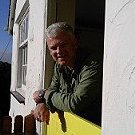



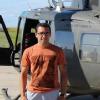

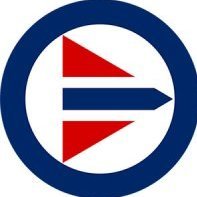
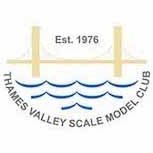

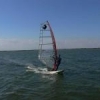

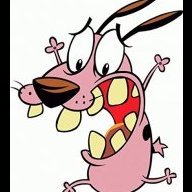
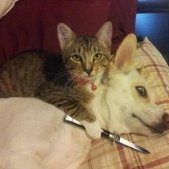
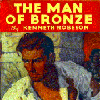

.thumb.jpg.d17ff607fc7e89ed057e63fcb6f2a888.jpg)
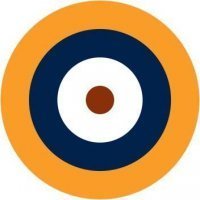
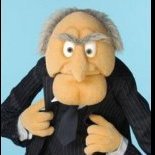

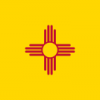
.thumb.jpg.eca0c14e328767d0864cd6db01ca9ccf.jpg)


